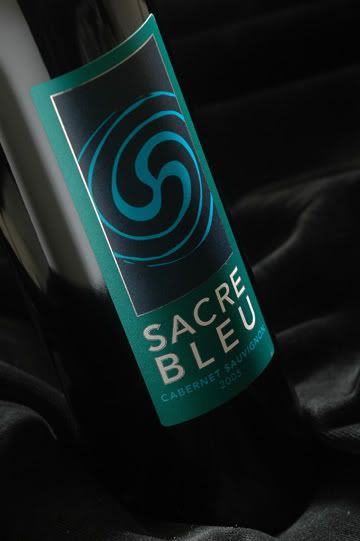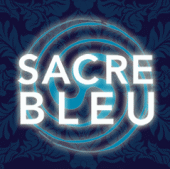We asked our wine & pop culture consultant, Doni Walker, to find out how champagne became such an important part of our celebratory lives. She always brings back great insights.
Legend has it that Marilyn Monroe took baths in 350 bottles of champagne. To that, her biographer adds, “She drank and breathed champagne like it was oxygen.” I think she was on to something!
Many people have said that champagne isn’t a just region, it’s not just a drink… it’s a state of mind. And I completely agree.
My last roommate and I spent one evening a couple of years ago sitting at our kitchen table with a couple of bottles of champagne, a notebook, and a pen. If champagne was for celebrating, then we were going to find things to celebrate, just to have things to toast to! There was nothing specific – no recent major milestones specifically to cheers to.
Oh, but we found things! We toasted to random Tuesday nights we were both home and could have dinner together. We toasted to “Sex and the City” in syndication. We toasted to having jobs that paid the rent, to friends, to healthy families, to having good hair days. And while the point wasn’t one big event in particular, it just further proved the natural partnership of champagne and celebrations that you just done see with, say… a Gewürztraminer.
But what is it about champagne that was made for celebrations? Why is it so elegant? Why do we associate champagne toasts with weddings, on New Year’s Eve, for promotions and housewarming parties?
Is it the bubbles? Is it more expensive to make? Is it something in the region, Champagne, France?
Why is champagne so romantic? Why are strawberries and champagne sexy (and they are!)? Did some great novelist decide it was the drink of love? Did ancient gods and goddesses believe something strange about its powers? Was there a song written about it?
Either way, all of this made me wonder – where did our cultural obsession, fascination, romance and affair with champagne begin?
It actually turns out that while it might romanticize and glamorize the idea of it, the elegance and mysticism in our love affair with the bubbly actually is – ahem – rooted (thank you) in its own attributes. Oh, and some clever marketing.
Champagne is distinctively unique because of where it comes from. The Champagne region of France has a unique northerly climate and chalky soil. Other regions can’t boast this lucky combination, and therefore real Champagne – the drink you get from that region – is truly one of a kind. Sure there are other sparkling wines, but “Cava toasts” or “Spumante and strawberries” just doesn’t sound as pretty.
Scientifically anyway, and according to Karen McNeil in The Wine Bible (where I found a good bit of this information), champagne’s story begins 65 million years ago when a (cue deep Discovery channel narrator voice) vast prehistoric sea covered Northern France and Britain. As the waters receded, they left behind a great crescent of chalk, making the soil rich in minerals and fossils. It is here on this soil that the region of Champagne originally emerged.
When wines were first being developed in this region, it wasn’t at all what its producers had in mind. Since the region is one of the coolest in the world, this impacted the way the grape sugar fermented. The cold temps would almost freeze the yeasts, which slowed down the fermentation process. When spring would come and warm them back up, they’d begin a second fermentation – this is where the sparkle comes from.
It sounds crazy, but this was NOT well-received. The end product was hardly drinkable; it was fizzy, gritty, and extremely tart. Heavy sweeteners were even added to try to disguise the bitter flavor.
Burgundy, another region of France and Champagne’s toughest rival in wine production and sales, was dominating the wine production at this time. Champagne (the region) tried for decades to try to improve their wine. Finally, instead of trying to change it, they took a fresh approach. They no longer were trying to disguise the sparkle, but now actually realized what a unique quality that was. They eventually found ways to produce and improve all of the steps in the process, and this changed the flavor into the drink we know and love.
I know this is great historical information and all, but it still doesn’t explain why champagne has the reputation it does today. Now we get why it’s special, but how did the bubbly earn its place in so many traditions and celebrations?
It turns out that this has a lot to do with the way it was originally marketed. Champagne makers (known as champagne houses) originally touted it as being a preferred drink of the royal, aristocratic, and other community higher-ups like knights and military officers. However, despite that prestige, they also made sure to portray it as a luxury for anyone and any occasion.
This absolutely worked (and still does! You know your designer purse makes you feel a little more Paris Hilton than you really are). By the turn of the [20th] century, most champagne drinkers were a part of the middle class!
Next, in another smart marketing move, they made an effort to target women (the household money-spenders!). The labels had pictures of love, romance, marriage, special occasions like baptisms, and other family events that the woman in the family would emotionally connect with.
Later, wine label images took a political spin. They commemorated the centennial anniversary of the French revolution, appealed to people across political persuasion – conservative folks loved the depiction of Marie Antoinette, while their more liberal counterparts celebrated the revolutionary scenes. World War I soldiers were pictured, usually with their country’s flag; this particular image would be tailored specifically for the country to which it would be imported. Talk about geo-targeting!
You can draw your own conclusions, but all these events and pictures highlight milestones in life, relationships, and a country’s history. And still today, the tradition of champagne for celebrations continues.
So, even though it turns out that champagne owes its popularity not to mythology or literature, but in fact to capitalism, as someone in the advertising industry, I think sometimes good marketing is worth celebrating!
Tuesday, September 18, 2007
Subscribe to:
Post Comments (Atom)





No comments:
Post a Comment